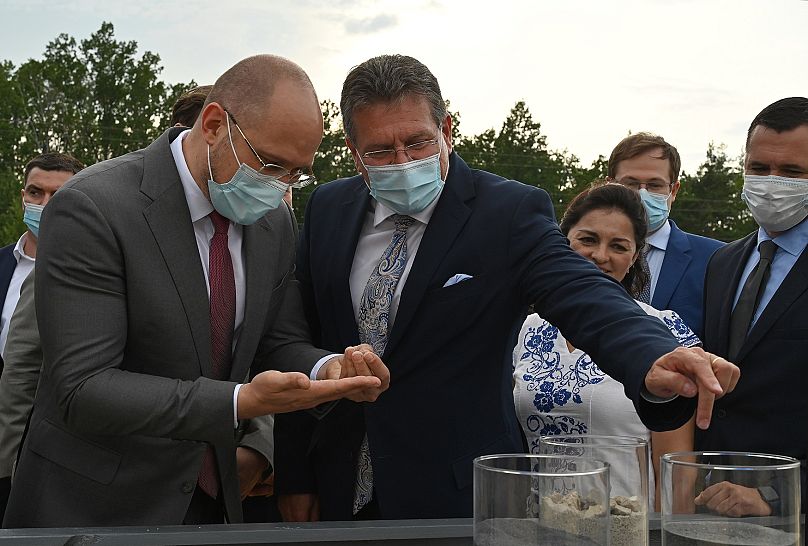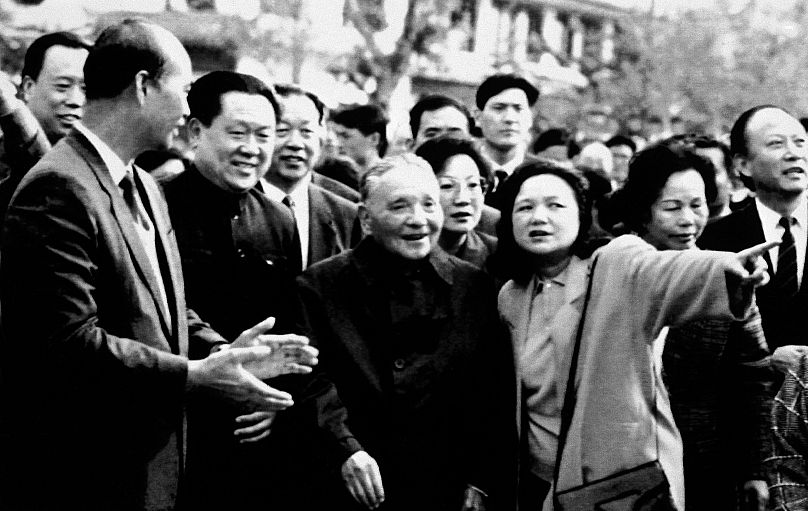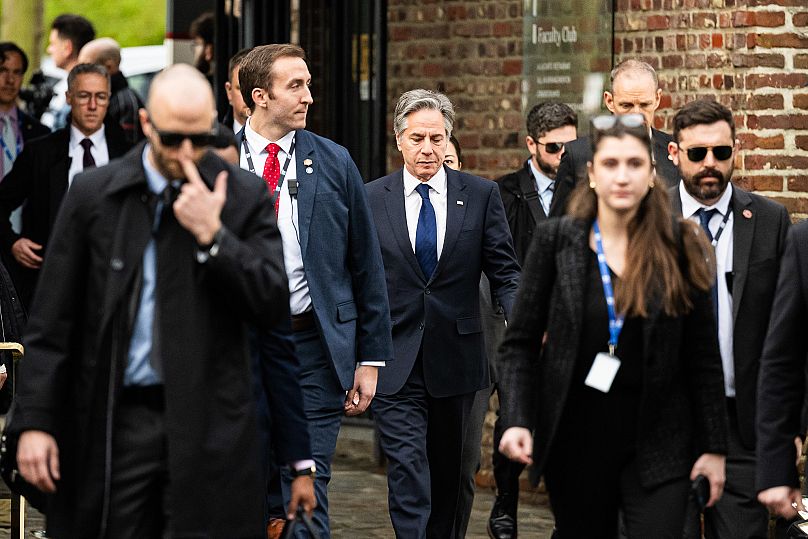On 5 April, European Commission executive vice-president Valdis Dombrovskis and Uzbekistan’s Minister of investment, industry and trade Laziz Kudratov launched a strategic partnership on critical raw materials. This was only the latest such deal, part of a concerted diplomatic and political effort by the von der Leyen commission to secure access to a range of elements from copper, lithium and cobalt to rare earth metals like neodymium. All of these, and more, are essential for the clean energy transition.
For three years now, the European Commission has been quietly signing memoranda of understanding with potential suppliers. First up was Canada in June 2021, a straightforward first choice as the EU had signed a free trade deal with Ottawa four years earlier, albeit ratification is still a work in progress. The second MoU was signed the following month, with Ukraine.
“The high potential of the critical raw materials reserves in Ukraine, together with the need for modernisation of its extractive industry underpinned by improving the legal and administrative framework for investors and geographical vicinity, represent a solid base for the mutually beneficial partnership,” the EU’s internal market commissioner Thierry Breton said at the time.

Ukraine’s prime minister Denys Shmyhal and European Commission vice-president Maroš Šefčovič examine a titanium sample in Zhytomir, July 2021 Genya Savilov/ EU
A mere seven months later, Russian tanks poured across the border as Vladimir Putin tried to seize control of the former Soviet Union state. The timing may have been coincidental, but it is a fact that Ukraine’s mineral wealth is largely concentrated in the east of the country, much of it now occupied by Russia’s invasion force. This fact has not escaped Commission vice-president Maroš Šefčovič, who discussed the matter almost exactly two years after the invasion, in front of a live audience in Washington.
“To put it simply, I think Ukraine has everything that we need that we have been getting from Russia,” Šefčovič said at an event hosted by the Atlantic Council think tank in February this year. “I see potential for critical raw materials, but also potential for low-carbon energy,” the Slovakian politician and EU green deal director said.
Since signing its strategic partnership deal with Kiev, the EU executive has accelerated the process, striking similar agreements with Kazakhstan, Namibia, Argentina, Chile, the Democratic Republic of Congo, Zambia, Greenland, Rwanda and, just before Uzbekistan, Norway. The total now stands at twelve, and other agreements are in the pipeline – not least with Australia, as confirmed in a joint statement on energy relations published on 4 April.
Alongside this diplomatic legwork, the EU has also sought to lessen its dependence on large, potentially unreliable suppliers, through legislation.
In September 2020 the EU executive produced a Critical Raw Materials Action Plan. “We cannot afford to rely entirely on third countries – for some rare earths even on just one country,” commissioner Breton said at the time. Europe would have to diversify its external sources of supply, while building up domestic capacity for extraction processing and recycling.
The action plan was quickly followed by a proposal for a Critical Raw Materials Act (CRMA), which was given the final rubber stamp by government ministers on 18 March. The new law specifies 34 ‘critical’ elements, with light and heavy rare earths each counting as one. Seventeen from this list are deemed of absolute ‘strategic’ importance, among them the copper needed for the envisaged expansion of the power grid, lithium and other elements used in batteries, and a group of rare earth elements used in permanent magnets.
An ‘unreliable partner’ is a diplomatic put-down you hear a lot in these days of heightened geopolitical tension. Von der Leyen fired it at Russia last year while in Santiago in the run-up to the signing of the memorandum with Chile. Russian foreign minister Sergei Lavrov had notoriously used it about the EU while standing next to foreign policy chief Josep Borrell in Moscow a year before the invasion. And it was even bandied back and forth between Brussels and Washington when Donald Trump occupied the White House. But the elephant in the room, the “just one country” that Breton referred to, is China.
Rare earths
“The Middle East has oil, China has rare earths,” a recently retired paramount leader Deng Xiaoping reputedly said in 1992 while on his famous Southern Tour, a trip credited with rescuing faltering economic reforms and putting the People’s Republic firmly on the path to becoming the economic superpower it is today.
The significance of Deng’s words may have been lost on many at the time. But fast forward to the 2020s and access to supplies of quaintly named elements such as neodymium, yttrium, promethium – europium, even – has become a pressing geopolitical issue. The materials are needed for the electronics, motors, generators and batteries that underpin the worlds digital infrastructure – and are essential to the clean energy transition on which so many economic aspirations are currently riding.
To give just one example, neodymium alloy magnets that maintain a powerful, permanent magnetic field, are used in electric car engines and wind turbines, two of the key technologies in Europe’s plan to shift the underpinnings of its economy from fossil fuels to renewable energy. Smartphones contain a range of rare earths, in magnets, of course, but also touch screens.
Little surprise, then, that people have started referring to rare earth metals and other critical raw materials such as lithium and cobalt collectively as the new oil, with all that implies. “Lithium and rare earths will soon be more important than oil and gas,” commissioner Breton said in September 2022 while presenting the Critical Raw Materials Act proposal.

Deng Xiaoping returns to Shenzhen in March 1992, just weeks after his famous Southern Tour China News /Associated Press
Europe woke up to its precarious dependency on China for rare earths during a supply squeeze in 2010/2011. This prompted a certain amount of development of resources elsewhere, but China still has over half the world’s known reserves of rare earths and commands some 90% or more of processing capacity.
On 21 December last year, Beijing announced a ban on the export of certain technology for the extraction and separation of rare earth metals, almost exactly two years after the establishment of a state-owned China Rare Earth Group company, an amalgamation of mining and processing concerns and research bodies that is under direct government supervision.
“It’s not only about raw materials, but about the entire value chain: from the gallium to the microchip, or from the lithium to the electric vehicle,” says Tobias Gehrke, a senior policy fellow at the European Council on Foreign Relations, a think tank. “And China has been developing this value chains strategy for 15 years,” he told Euronews. “And so that’s a big risk.”
Europe and its allies, then, will have to focus on more than just securing supplies of CRMs. “At the end of the day, who needs the raw materials – that’s a much bigger question,” Gehrke told Euronews. “China is the main market, because it is the dominant manufacturing power, which builds most of the solar panels, wind turbines and batteries that need raw materials.”
“Even if you are supporting a mine in Namibia,” Gehrke says, referring to the EU’s stated aim of helping develop both mines and processing capacity in the third countries with which it has set up partnerships. Šefčovič stressed during his talk in Washington that Brussels’ intention was not simply to “leave with the raw materials and leave the mess behind”.
“At the end of the day, if there is not enough demand from Europe or other places, this mine would anyway ship to China, because that’s where the demand will be,” Gehrke said. “The important thing is not to see it only as a raw material challenge, but as really a much broader industrial challenge over who produces the technologies of tomorrow,” Gehrke said.
The EU, and US have clearly recognised this. The Biden administration has rolled out its multi-billion-dollar package of incentives and tax breaks for investments in clean energy, from hydrogen production to electric cars. The EU, clearly spooked at the prospect of transatlantic competition, responded with its own Net Zero Industry Act. The twin rivals and allies are nurturing a partnership of their own.

US Secretary of State Anthony Blinken in Leuven, Belgium, on 5 April for talks on EU-US trade and technology cooperation © Belgian Presidency of the Council of the European Union / Vlad Vanderkelen
The EU-US Trade and Technology Council (TTC), a cooperation forum established in 2021, met in Leuven on the 4-5 April under the auspices of the Belgian presidency of the EU Council. Washington and Brussels affirmed in a joint statement their “close collaboration on diversifying global critical minerals supply chains”.
They “advanced negotiations” on a bilateral Critical Minerals Agreement to strengthen mutual supply chains, and launched as co-chairs a Mineral Security Partnership (MSP) Forum. Present was Volodymyr Kuzio, Ukraine’s deputy economy minister, along with officials from a few other CRM partnership counties.
The coming years will see a carve-up, hopefully conducted through diplomacy rather than war, of the world’s essential mineral wealth. The US and others are courting Vietnam, which has the second largest reserves of rare earths after China. Greenland is the only one of the EU’s partners so far with significant reserves, though the 1.5 million tonnes of economically viable deposits estimated by the US Geological Survey could well be just the tip of a rapidly melting iceberg.
But the characterisation of critical raw materials and rare earths as ‘the new oil’ may be erroneous in one key respect. Used as a fuel, petroleum is burned only once before persisting as the greenhouse gas carbon dioxide. Critical raw materials, especially the metals, can be recycled – as recognised in the CRMA with its various targets for recycling rates and capacities. Once a certain critical mass is achieved, the need to mine ever increasing quantities of ore – and the volumes involved are tremendous – should, in principle, diminish over time.
News Related-
Antoine Dupont still hurt by 'injustice' of World Cup loss to Springboks
-
China's New Aircraft Carrier Begins Catapult Testing
-
Aircraft Downed Inside Russia By Patriot System: Ukrainian Air Force
-
“Am I Prog’s Taylor Swift? That’s a debate that could run and run”: why Peter Hammill re-recorded his Enigma-era albums
-
Car With Pro-Russian Fighters Blown Up by Resistance: Exiled Mayor
-
Europe and African nations must find effective common ground in dealing with migration influx
-
Springbok lock opts not to renew contract with URC team
-
Pravin Gordhan’s deathly legacy: A threat to SA’s economic future
-
Antoine Dupont STILL hurt by ‘injustice’ of Rugby World Cup loss to Springboks
-
Rubber stamping NHI Bill will have damaging consequences for SA for generations
-
Inside horrific conditions Hamas hostages suffered including losing 15lbs in 50 days
-
After the Bell: SA’s NHI healthcare disaster starts right here
-
Gupta-linked development land for sale
-
Gary Neville begrudgingly claims brilliant Man Utd midfielder ‘looked like a Man City player’ in Everton mauling
